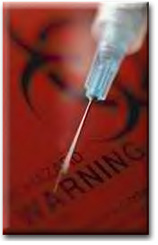


| Emerging Global Infectious Diseases and Your Health | ||||
| This is a critical issue when there is blood or blood by products present. The increasing emerges of global infectious diseases are due impart to the increase in: | ||||
| ||||

| ||||||||||
|
| ||||||||||

5500 NW 15th ST, M/4
MARGATE, FL 33063
TELEPHONE - (954) 973-9502
ABRA FL REPRESENTATIVE - (877) 521-0078
ABRA HOTLINE - (888) 979-2272
LICENSED BIOMEDICAL/INFECTIOUS WASTE TRANSPORTER
SERVING SOUTHEASTERN FLORIDA
LICENSED - INSURED - BONDED -------------------------------------------------------24 HOURS 7 DAYS


